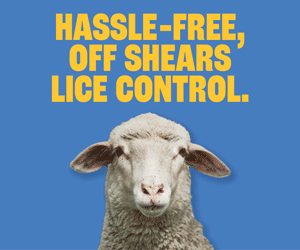
Tom Bull talking on a panel session with Jigsaw Farms owner Mark Wootton and television personality Stan Grant. Photo: LambEx
THE sheep industry has been told that Australian lamb could end up on the Wagyu end of the menu, with a focus on provenance and developing premium products.
Southern New South Wales stud producer and brand owner Tom Bull told last week’s Lambex conference in Adelaide that he was confident Australia could lead the world into a well-diversified and premium market for sheep meat.
“I went to the biggest trade show in the world in Shanghai last year and everyone had good beef – the Russians’ Angus beef was insane, the Chinese Wagyu beef was insane, the South American beef was insane – and everyone’s lamb was rubbish,” Mr Bull said.
“I came away from there thinking ‘I would rather be in lamb’, there is a huge opportunity. Our global competition is not only declining, but what they produce is pretty ordinary.”
The conference had a big focus on developing a more sophisticated future for the industry, with organiser Jason Schulz opening the conference by saying he refused to buy the narrative that the industry was its knees.
Looking to the future, Mr Bull said the diversification of the beef industry was a good lesson the lamb industry.
“Beef had a few ugly-looking skinny cattle called Wagyu and have now made it a multi-billion-dollar industry,” he said.
“We are stuck in the cheap seats on menus. If you have look at a menu there will be a 120-day Angus, a grassfed, a Wagyu and then in the corner of the menu there will be chicken, pork and lamb.
“Our biggest issue on menus is that we are usually called ‘lamb’, we have lost price and value. Consumers don’t see us as being a worthy investment, we need to encourage them and give them reasons and providence.”
Need for more entrepreneurs
Value-based marketing and processor feedback was a big focus of the conference, with extensive discussion about the producer demand for carcase feedback from processors and the opportunities and limitations of marketing premium lamb.
Mr Bull said it was a conversation he was familiar with.
“In 1997 I went to the first lamb convention in Melbourne and we spoke about the need for feedback and the need for value-based marketing – same as what we are talking about today,” he said.
“In that same time the average consumption per-capita of lamb in Australia has gone from 12kg to 7kg and the average farmer age has gone from early 50s to mid-60s.”
Asked what he thought the cause of the issues were, Mr Bull said the industry needed more entrepreneurs.
 “We have too many bureaucrats in this industry and not enough entrepreneurs. The biggest change in the lamb industry has been entrepreneurs – people like Roger Fletcher and Chris Thomas,” he said.
“We have too many bureaucrats in this industry and not enough entrepreneurs. The biggest change in the lamb industry has been entrepreneurs – people like Roger Fletcher and Chris Thomas,” he said.
“We don’t need people on the sidelines yelling ‘do this, do this’, we need to pick up the ball and start running.”
Mr Bull said he could see a future for the lamb industry, where the supply chain is broken down between breeding and finishing in a similar way to the beef industry. He said improving the entire production process would decrease the need for carcase feedback.
“I think there will more processor-owned finishing and that’s when feedback will become less important,” he said.
“Feedback isn’t always the best tool, that genetic and nutrition market integration is what has changed the game with beef. With our guys, we are positioning ourselves for that.”
High value can drive traffic
Mr Bull said one of his goals as a business owner is to produce an animal that has never walked the earth before every year.
“We have cracked 14pc intramuscular fat, the opportunities for 14pc IMF product into Japan as thin sliced are huge,” he said.
“I think there are a lot of opportunities in North Asian markets, like Japan and Korea.”
Mr Bull said these markets added value to secondary cuts.
“Everyone always talks about racks, but racks are only 5.5pc of the carcase and they look after themselves,” he said.
“But these markets allow us to change the other part of the carcase from grilling chops to premium thin-sliced lamb. The story is easy to tell because we piggyback off beef, we are even using some of the beef terminology for cut description – beef really has paved the way.”
While he said he understood there were cost of living pressures, Mr Bull also said the marketing of premium lamb can work to drive consumption.
“We wanted to be the first people in Australia to have $100/kg cutlets and when we hit that, sales went up. When Mr Wong’s had a $600 Wagyu steak, they couldn’t keep up,” he said.
“There are only so many upper echelon consumers in the world, but the lamb industry is so far away from that. New Zealand sheep numbers are going down, China and India are eating all their own and I think we will hit the EU with force.
“The attitudes of UK farmers is interesting, they are thinking Australia a cheap ‘commodity’ product and I am thinking ‘let’s front up and have a go’.”

Lamb has become inconsistent in tenderness and flavour. I’m a lamb producer and eat very little lamb and find that price is no indicator of quality; it’s all bland and chewy. I miss the flavour and tenderness of two-tooth from the family butcher of earlier years.
The eating advantages of the Wagyu comes from the intramuscular fat. This is critical particularly for Asian diners where stir-fry is normal.
Jumping on the intramuscular fat band wagon may not be the answer for prime lamb, although it may be an advantage to the hard fat dominant in most composites today.
The eating qualities of prime lamb out of a first cross dam comes from the sweetness of the Merino heritage of the ewe. It was understood by our mothers who always purchased Merino hogget from the butcher for a Sunday roast. It was lean and sweet with little fat.
The LambEx conference in Adelaide demonstrated the future is meat and wool from the Australian Merino; the animal adapted to Australian conditions that can produce a luxury fibre and meat with a unique flavor.
The composite or the terminal lamb without any Merino background may not be the way to go, without strong selection for eating quality traits.
With the huge interest in lamb worldwide, Merino lamb trumping 1st, 2nd, and 3rd with profitability in lamb profitability at LambEx, why is the current market walking away from lamb? I see an opportunity to expand Merino lamb production. It just needs the correct breeding mother with strong traits for blow fly resistance and fertility. They are in abundance in the north. It just needs rain in the south and the market will explode.
I remember being taken to Smithfield on the edge of London, one of the biggest meat markets in the world. The Aussie lambs looked like half starved kangaroo dogs. The NZ ones a few tads better, but nowhere near the British lamb, which were amazing.
Last week there was an article on Episode 3 quoting the large price difference between British and European lamb against NZ and Australian lamb which were way less, but quality was not mentioned.
As for Wagyu lamb, I don’t think they will emulate the Wagyu genetics, maybe because lambs don’t pull ploughs, though I’m not sure.
Great points Charlie. The intra muscular fat in the Wagyus did come from pulling the plough in Japan. And whilst we all know fat carries the flavour, consumers of lamb and mutton want flavour without fat. Everywhere I go people complain that lamb has lost its flavour, and that is correct.
The inherent flavour not only comes from the Merino. Recently in Inner Mongolia I enjoyed sheep meat with glorious flavors with sweet soft fat.
The composite breeders have been too slick with their marketing at the cost of of the eating qualities of their product.